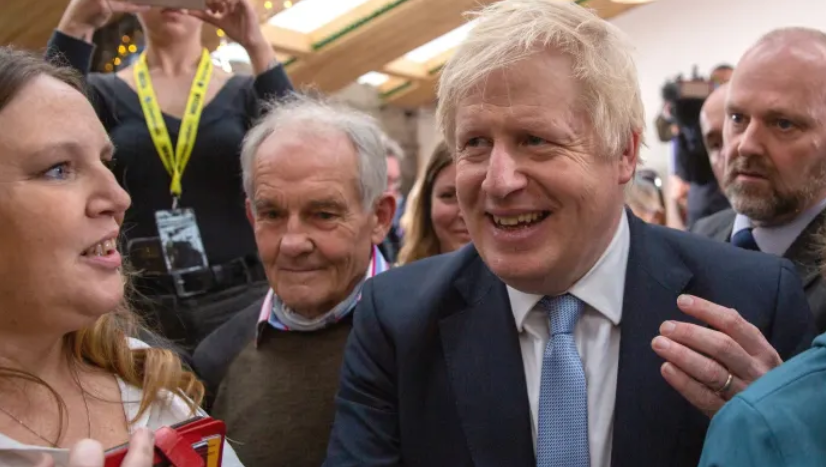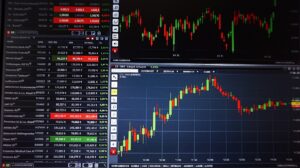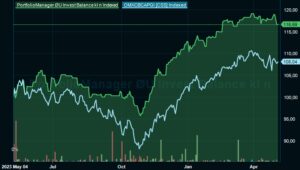Uanset om Storbritannien får en deal med EU, så bliver Brexit en dyr fornøjelse, vurderer ABN Amro, der skønner, at den britiske økonomi, BNP, bliver forringet med 5 pct. i det lange løb. Banken regner med, at der indgås en aftale i begyndelsen af 2021. Den britiske svækkelse begyndte allerede, da briterne ved en folkeafstemning i 2016 stemte for Brexit.
Uddrag fra ABN Amro:
UK Outlook 2021 – Brexit damage will be massive, even with a trade deal
- A post-Brexit trade deal continues to hang in the balance. The risk of ‘no deal’ is very high, but we doubt such a scenario would last long; a deal would likely be concluded in the course of 2021
- Even with a deal, though, Brexit will inflict significant damage on the UK economy
- In the near term, the extraordinary effects of the pandemic will mask the Brexit hit…
- …but as a base case, we expect the productive capacity of the UK economy to be 5 percentage points lower over time than if it had remained an EU member
- This also means the UK is likely to lag its peers in returning to pre-pandemic levels of activity
- Against this backdrop, the authorities will continue unprecedented support for the economy
Brexit to knock around 5% off UK GDP in the long run
At the time of publication, the UK and EU remain deadlocked in talks over a post-Brexit free trade agreement to replace the UK’s lapsing single market and customs union membership on 1 January. Our base case continues to be that a deal will be struck. If it is not and the UK exits without a deal, then an agreement is likely in the course of 2021. However, regardless of when or whether a deal is signed, Brexit will cause immense damage to the UK economy, and to a lesser extent to the remaining EU members. Some of that damage will be visible immediately in the early part of 2021, albeit masked by the effects of the pandemic.
For 2021, this means that the UK will lag the eurozone and the US in its recovery to pre-covid levels of activity, despite an earlier vaccine roll-out. In the longer run, the degree of damage will depend on how far the UK diverges from EU norms, which will in turn determine how severe non-tariff barriers to trade will be. Our base case is that 10 years after the referendum, UK GDP will be around 5pp lower than it would have been had it voted to remain in the EU.
Breaking down the hit to economy – the short vs the long-term effects
The hit to GDP from Brexit is made up of two key components: 1) the effect of border checks on the flow of goods (the initial shock); 2) the effect of nontariff barriers, such as divergences in regulations, and the need for additional cross-border approvals that over time hamper trade (the longer term effect). In a no deal scenario, there will also be the added effect of tariffs. We explore these effects in more detail below.[1]
The short-term impact: Border bureaucracy and disruption to hit GDP by c.1.5pp in 2021
On 1 January, the UK will leave the EU’s customs union – regardless of whether or not the UK has signed a trade deal with the EU. As part of the customs union, goods flow freely across borders as though part of a domestic market. Overnight, the regime for UK-EU trade will change dramatically, with export declarations required and (in a no deal scenario) tariffs to be paid.
Aside from adding a new layer of bureaucracy to trade, the introduction of border checks is likely to cause significant disruption, with border queues meaning potentially critical supplies of food, medicines and components likely taking longer to reach their destination than they would otherwise.
Trade with the EU makes up around half of total UK trade; as a share of GDP, exports to the EU are around 7%, and imports around 10%. Such a major change to such a large part of the economy is likely to have major repercussions for output.
While there is significant uncertainty over just how much the economy will be affected, the UK Treasury estimates that border checks will cause a 1.5pp hit to GDP compared to a counterfactual of continued customs union membership. This effect will likely be almost immediate; on the UK side border checks will be phased in gradually in order to ease disruption to food and other critical supplies, but on the EU side border checks will be strictly enforced from day one, on 1 January.
A Bank of England survey in October showed that as much as one third of respondents were only ‘partially’ prepared for new trade arrangements, so the risk of disruption is very high. Taken together, we expect exports to see a bigger hit than imports in the early half of 2021. The hit to GDP will therefore fall disproportionately on the UK economy, with a sharp drag from net exports partly offsetting the expected recovery in consumption following the gradual easing of lockdown restrictions.
While some of this drag will unwind as businesses and authorities adapt to the new normal, some cross-border trade will become economically unviable, and in our base case we have assumed a permanent loss in potential output consistent with the UK Treasury’s estimate. With that said, although we expect the UK’s post-covid recovery to lag its peers, the low base due to the current (partial) lockdown means that on a quarterly basis growth is likely to remain positive next year.
The long-term impact: Expected divergence in rules and standards has hit potential growth
The longer term impact of Brexit relates more to the UK’s exit from the EU single market for goods and services. The single market is a legal framework that creates a ‘level playing field’ of common rules and product standards across borders, thereby reducing so-called nontariff barriers. Since the election of Prime Minister Johnson’s government a year ago, the UK has departed from its prior commitment to stay broadly aligned with EU rules.
As a result, although the UK will exit the single market from a position of full alignment with EU rules, over time rules are likely to diverge, and this will create increased barriers to trade. For instance, exporters may need extra product approvals to sell into the EU single market, creating bureaucracy, delays, and reducing competition compared to the counterfactual of continued single market membership.
Some of the implications of regulatory divergence are already evident, well before the UK’s exit from the EU single market. For instance, financial services providers have long given up hope of the UK retaining so-called ‘passporting’ rights – which enable the free trade of financial services across borders.
As a result, major global banks have set up subsidiaries in various EU jurisdictions in order to maintain access to the single market. Alongside the broader drop in investment over the past few years, this is likely one of the reasons that GDP growth in the UK had already decelerated following the 2016 referendum vote to leave the EU – well ahead of the end of the transition period this year.
Indeed, the Office for Budget Responsibility’s latest estimate of the potential growth rate in the UK is just 1.6% – down from the trend rate of growth of 2% in the years leading up to the EU referendum in 2016, and almost half the pre-global financial crisis trend rate of 2.8%. Not all of this fall in potential growth can be attributed to the vote to leave the EU, but the bulk of it arguably is. In fact, the economy underperformed even this lower rate of trend growth over the course of 2016-19, during which growth averaged just 1.5%.
Initially, the fall in growth was mostly driven by weaker investment, with uncertainty over the UK’s future trading arrangements a significant impediment. Consumption growth held up for a time as consumers dipped into savings to make up for the hit to real incomes from the fall in sterling. However, this was not sustainable, and over 2017-19 consumption caught up with reality and also decelerated.
Naturally, estimates of the impact of nontariff barriers is subject to high uncertainty. Chiefly, the effects depend on just how far the UK government ends up diverging from EU regulations. This is a matter of politics, and a future government may prefer to align more closely with the EU than the current government.
However, even in a more optimistic scenario, the mere uncertainty over the UK’s future alignment with the EU will likely be enough to continue dampening potential growth for years to come. Finally, note that even according to the UK government’s own analysis, the potential mitigating effect of new trade deals with non-EU countries is tiny – in the order of 0.2-0.3pp at most, which does not even remotely offset the negative effects of Brexit.
Impact of no deal would be significant…
Our analysis so far has focused on the impact of Brexit in the event of a trade deal being agreed (our base case). However, there is a very high chance that a deal won’t be agreed. We doubt such a situation would last for very long – the two sides would probably aim to reach an agreement in the course of next year – but it is worth considering the effects of such a no-deal scenario.
The primary difference in a no deal scenario is that, in addition to border checks and nontariff barriers, tariffs would be imposed on UK-EU trade. Tariffs would lower UK GDP by a further 1.5pp compared to the counterfactual, while the impact of nontariff barriers would also be more severe, as the UK and EU’s regulatory regimes are likely to see an even sharper divergence in a no-deal scenario; this would lower GDP by an additional 1pp.
The effect of tariffs would appear fairly quickly; some importers and exporters might find their business models rendered unviable. The effect of bigger nontariff barriers would be more uncertain and appear more gradually. All told, in the long run GDP would be around 7.5pp lower in a no deal scenario than if the UK had remained an EU member, compared to 5pp lower if the UK agrees a trade deal.
As with all estimates of Brexit impact, there is a high degree of uncertainty over the precise effect of no deal. How severe it is depends on how smoothly contingency plans are activated, and how acrimonious the breakdown of talks is. For instance, the EU has proposed that for fisheries there would be a grace period of one year, to allow its fisherman time to adjust.
If the UK does not agree to this – and the recent deployment of Royal Navy gunboats suggests that it may play hardball – then the EU might retaliate in some other form. The two sides could quickly be drawn into a tit-for-tat of measures and countermeasures. Naturally, this scenario could have more severe consequences for the economy.
…but the difference is smaller than it was under former PM May
While the difference between a deal and no deal scenarios is significant, it is much smaller than the difference with former PM Theresa May’s proposed hypothetical deal. This proposed minimal or no border checks, either via a special arrangement with the EU or failing this via customs union membership (aka the Northern Ireland backstop), and minimal nontariff barriers due to planned regulatory alignment with the EU.
The current government has taken a radically different course in opting for a basic free trade agreement with the EU, and as such, the difference between a deal and no-deal scenario is much smaller (for an illustration, see the left-hand chart on page 1).
A no deal Brexit would significantly raise inflation
Aside from the hit to the broader economy, one specific effect a no deal Brexit would be to temporarily raise inflation, due to the imposition of tariffs on EU imports. The UK currently applies the EU’s common external tariff (CET) schedule on non-EU imports, but from 1 January the UK’s new global tariff schedule (UKGT) will apply.
The UKGT largely mirrors the CET, notwithstanding some simplifications, with the average tariff on food products for instance falling from 22% to 20%. In a no deal scenario, under WTO rules the UK will have to apply this tariff schedule to EU as well as non-EU imports. The UK imports around 26% of its food from the EU (55% is sourced domestically, and the remaining 19% imported from elsewhere). As a significant importer from the EU, a no deal scenario would therefore raise food price inflation; we estimate this would push up overall 2021 inflation by around 1pp to 2.5%.
Covid-19 impact: Even with earlier vaccination, UK is among the hardest hit by the pandemic
Aside from Brexit, the other major macroeconomic driver is of course the pandemic. The UK caught headlines in recent weeks as the first among developed countries to approve the BioNTech/Pfizer covid-19 vaccine. Last week, the country’s National Health Service began inoculating the most vulnerable members of the public – healthcare workers and those over the age of 80. Initially, 800,000 doses will be available – enough to inoculate 400,000 people, as two doses are required – while the government has ordered 40 million doses to be administered over the coming months.
The UK Health Secretary has suggested that the vaccination programme could lead to the lifting of locally tiered lockdown restrictions as early as March – sooner than our base case for most European countries (we expect lockdowns to be lifted during Q2, and social distancing restrictions to be eased in Q3).
While the UK’s head start on the vaccine rollout will enable consumption to recover somewhat sooner, the damage the pandemic has wrought on the UK economy is also significantly bigger than that of the US and the eurozone in aggregate. Having initially wavered over the need for a lockdown early on, the UK entered one of the strictest and most prolonged lockdowns, with all non-essential activity banned. This compared with the much lighter lockdowns in the Netherlands and Germany, where restaurants and bars were closed, but most other economic activity allowed to continue.
The UK has also erred more on the side of caution during the second wave, enforcing a lockdown when covid-19 metrics were not as bad as those that triggered lockdowns elsewhere in Europe (for instance, the Netherlands started its second lockdown when daily cases were 38 per 100k; the UK started at 34 cases).
As a result of the more aggressive policy response, economic activity has also been hit much harder, and our expectation is for the UK economy to contract -10.9% in 2020. This compares with -7.6% in the eurozone, and -4.3% in the US. The UK therefore has much more lost ground to make up in 2021, and although we expect headline growth to be higher in the UK than most other countries, the economy will still be around 3.5pp below pre-pandemic levels by the end of 2021, compared to a 2.7pp shortfall in the eurozone, and just 0.2pp in the US.
Policy response: Continued QE coupled with fiscal life support
Faced with the challenges of both Brexit and the pandemic, the authorities have spared no effort in providing maximum support to the economy. The Bank of England has cut rates back to near zero, and more than doubled its quantitative easing target for net asset purchases, to GBP895bn from GBP435bn before the pandemic.
To stem a surge in unemployment on the back of lockdowns, the government has subsided the wages of furloughed workers via the Coronavirus Job Retention Scheme, similar to the Kurzarbeit programme in Germany and the NOW in the Netherlands. At its peak, this scheme subsidised more than one in four workers in the UK. While the government had previously signalled it would withdraw the scheme in October, the second wave of the pandemic followed by a second national lockdown in November led to it being extended until at least March 2021.
We expect the government to continue to subsidise wages for as long as the tiering system of covid-19 restrictions remains in place. With inflationary pressure still relatively muted, and an expected pickup in unemployment likely to keep it that way, we expect the Bank of England to continue accommodating this fiscal largesse, keeping debt financing costs low. In addition to increasing its QE target, in the event of a no deal Brexit scenario the BoE may also implement a rate cut, taking Bank Rate into negative territory for the first time.
With that said, inflation expectations are notably more elevated than the UK’s peers, and already consistent with the Bank of England’s 2% inflation target. As such, the UK is at a higher risk of the central bank having to prematurely withdraw accommodation if the supply shock implications of Brexit end up outweighing the demand shock, thereby pushing inflation persistently higher. We do not expect this to happen on our forecast horizon – to end 2022 – but it is a bigger risk than it is for other advanced economies.






















